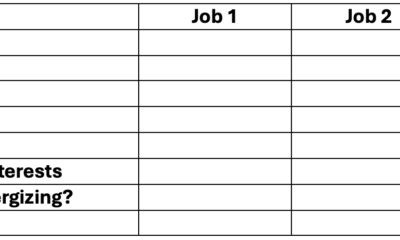Business Planning
Customer Value in Strategic Management

Understanding Customer Value: A Strategic Perspective
“Everything is worth what its purchaser will pay for it.” – Publilius Syrus, 1st century B.C.
In the realm of business and marketing, the concept of value holds immense significance. What constitutes value? How do you quantify it? And most importantly, how valuable are your offerings to your customers? These are pivotal questions that often challenge even seasoned industry professionals. Yet, in today’s competitive landscape, understanding and delivering value to customers is more crucial than ever.
Businesses that rely heavily on procurement costs are increasingly leveraging purchasing strategies to boost profits, placing pressure on suppliers to lower prices. Consequently, suppliers must have the ability to discern and deliver what each customer truly values.
Customer Value: A Strategic Asset
Globalization, when harnessed effectively to capitalize on economies of scale and win over customers, can simplify complex challenges. Without acknowledging the customer as a strategic asset, an organization cannot secure sustainable competitive advantages or enhance shareholder value consistently.
Customer value serves as the lifeline that prevents companies from financial ruin and underscores the importance of nurturing enduring relationships with existing customers through exceptional experiences.
The crux of customer value lies in pinpointing what holds the most significance for customers and delivering on those fronts. Neglecting the focus on customer value can plunge companies into disarray, leading to rapid profit erosion and market share loss to competitors offering superior value propositions.
Read on to delve deeper into the realm of customer value and its pivotal role in organizational success. Discover how your company can elevate the value it offers to its clientele.
A Clear Picture of Your Target Customer
Segmentation plays a vital role in identifying a company’s target customer base. By segmenting customers, companies can channel resources towards those most likely to resonate with their value propositions. The distinction between individual and business customers, commonly referred to as business-to-business (B2B) and business-to-consumer (B2C), shapes a firm’s approach to reaching its clients effectively.
To grasp the essence of your target customers, developing customer metrics and delineating the characteristics of the customer segments you aim to measure are pivotal. Understanding the customer life cycle and the factors influencing their decisions enhances your measurement framework. This valuable data is typically sourced from marketing departments through interviews, panels, or surveys. While casting a broader net may slow down the process, engaging in early-stage debates proves beneficial.
Customers vs. Competition
To outpace your business rivals, the initial step involves identifying them and evaluating their offerings vis-a-vis your target audience. This insight enables you to pinpoint your competitive edge and leverage it to attract new customers effectively.
Rather than fixating solely on outperforming competitors for enhanced profits, center your business strategy on delivering heightened value to your customers. This approach yields fruitful outcomes in terms of sales growth and bolstered brand loyalty.
Prospective buyers must perceive substantial value in your business to switch allegiance from competitors. The current climate, marked by increased consumer openness to trying new brands amid lockdowns, presents a prime opportunity for businesses to attract fresh customers. Incorporating contingency plans in your business strategy to cater to repeat customers and nurture brand loyalty amid challenging times is crucial.
Identifying Market Gaps
Continuously seeking innovative ways to address market voids helps you stay competitive and draw customers away from rivals. While this approach necessitates significant investment in product development, offering a unique product or service that addresses unmet consumer needs guarantees a competitive edge.
Solicit feedback from customers through interviews or surveys to pinpoint market gaps. Subsequently, delve into industry trends to stay ahead. Being the first to market with a solution, even if competitors follow suit, positions you as an industry leader, attracting new customers in the process.
Customer Value Strategies
Every business must cultivate and nurture relationships with target consumers, irrespective of the product or service offerings. Customer perception of your products and services hinges on the value they derive from interacting with your brand.
Competitive Advantages through Sustainable Differentiation
A deep understanding of your core businesses forms the bedrock of successful diversification. Core businesses, situated in lucrative industries with sustainable competitive advantages, offer opportunities for diversification leveraging existing interrelationships and skills.
Strengthening core businesses through enhanced management, internationalization strategies, and technological advancements is imperative. Pruning non-core units liberates resources for reallocation. Disposal strategies, whether through immediate liquidation or strategic enhancement for future divestment, are crucial.
Product Value
Many consumers prioritize price when making purchasing decisions. Price guarantees ensure competitive pricing without compromising profit margins. Sustaining lower prices necessitates meticulous revenue management to safeguard profitability.
Unexpected Service
Delivering exceptional customer service throughout the sales journey, be it product-centric or service-oriented, fosters customer retention and referrals. Prioritizing customer needs at every touchpoint, from initial interactions to issue resolution, creates value and strengthens relationships. Training employees in conflict resolution underscores the value you place on customer relationships.
-

 Professional Development1 month ago
Professional Development1 month agoDrawing up your strategy
-

 Personal Growth2 months ago
Personal Growth2 months agoSucceeding as a ‘parentpreneur’: Top tips
-

 Videos2 months ago
Videos2 months agoGreat Leaders INSPIRE Others To Do Great Things
-

 Productivity1 month ago
Productivity1 month agoHow to Increase Remote Work Productivity
-

 Productivity2 months ago
Productivity2 months agoTips for Boosting Work Productivity
-

 Productivity2 months ago
Productivity2 months ago5 Ways to Increase Your Personal Assistant’s Productivity
-

 Leadership1 month ago
Leadership1 month agoHow to Tackle Big Challenges
-
Leadership1 month ago
Cutting Through the Clutter of Internal Communications





























